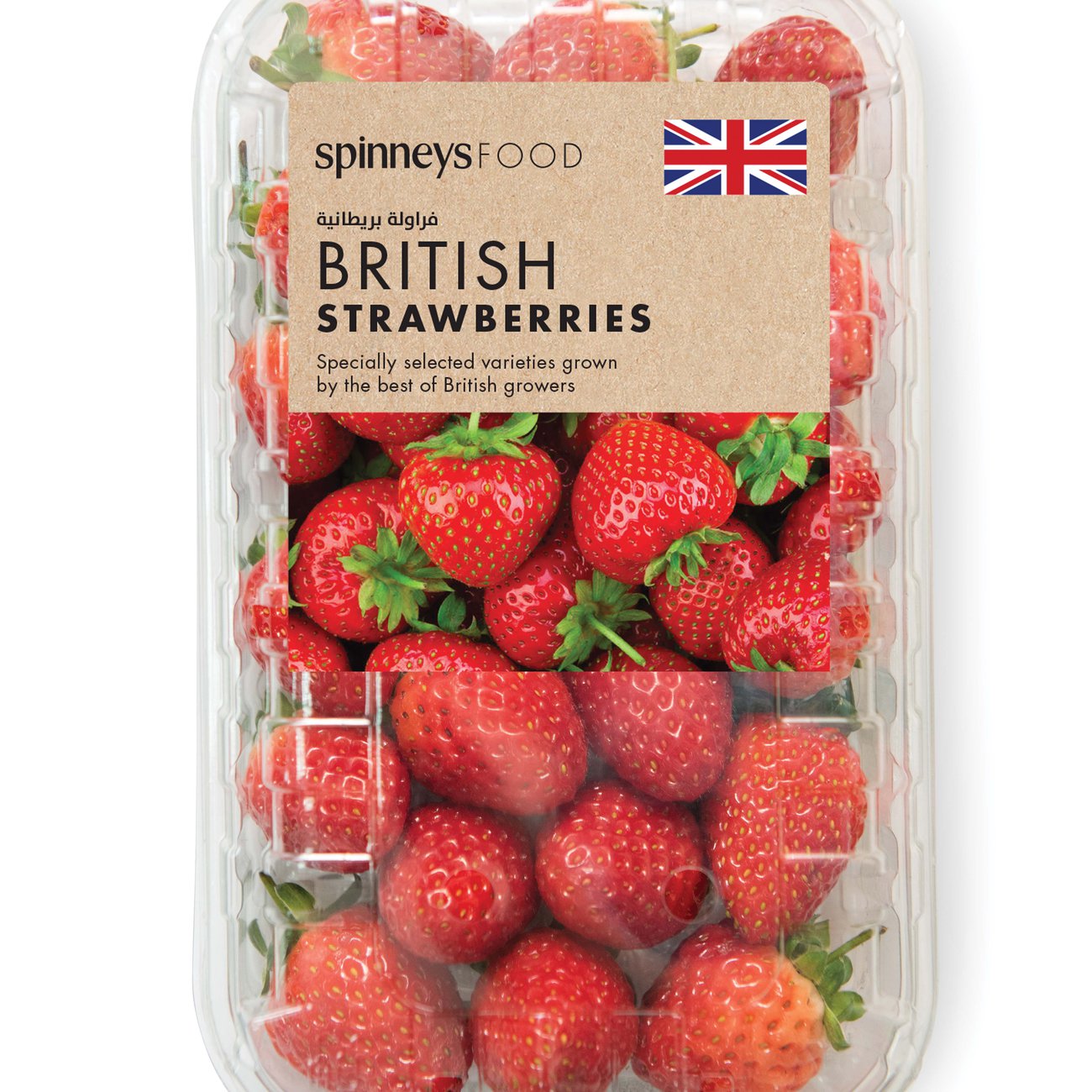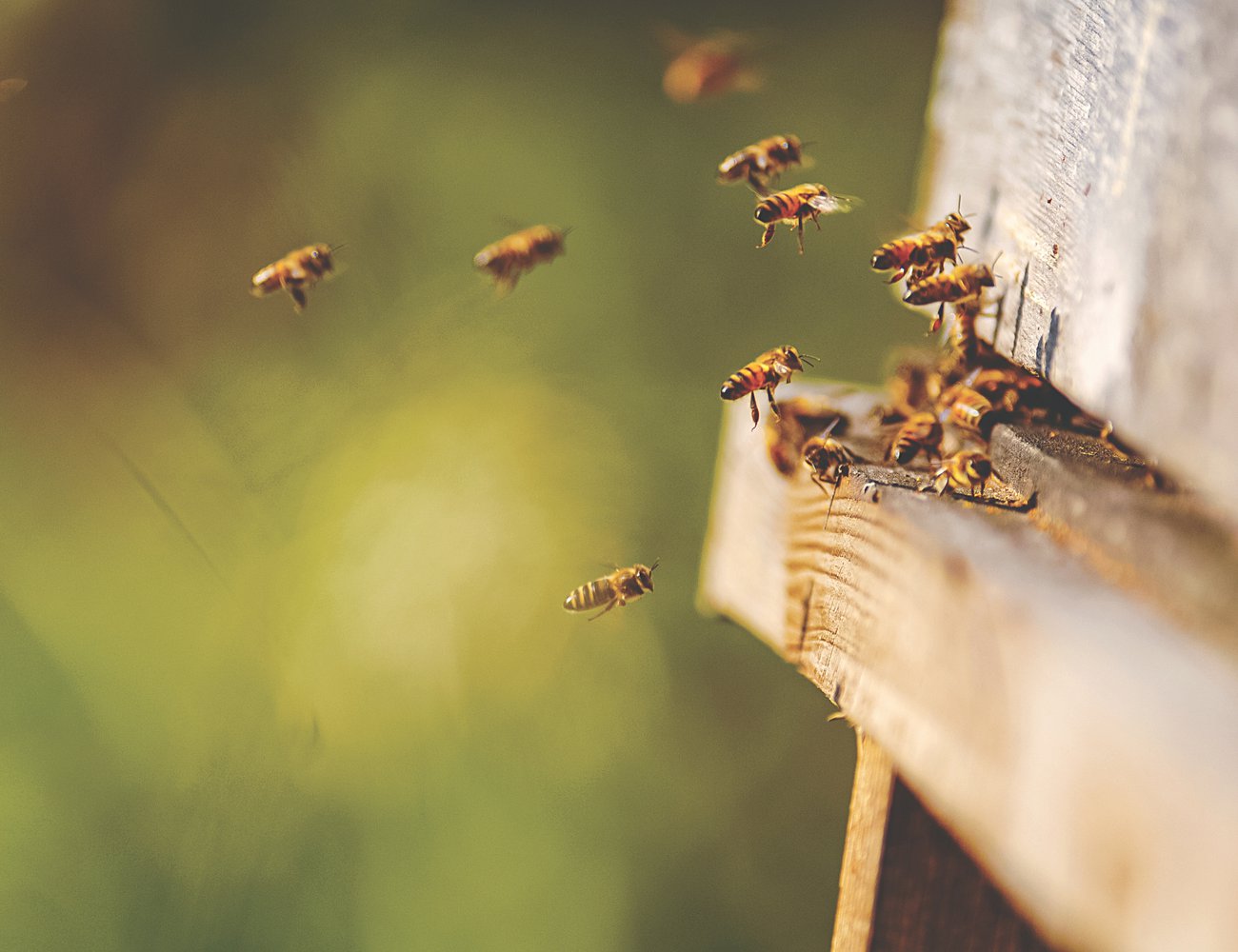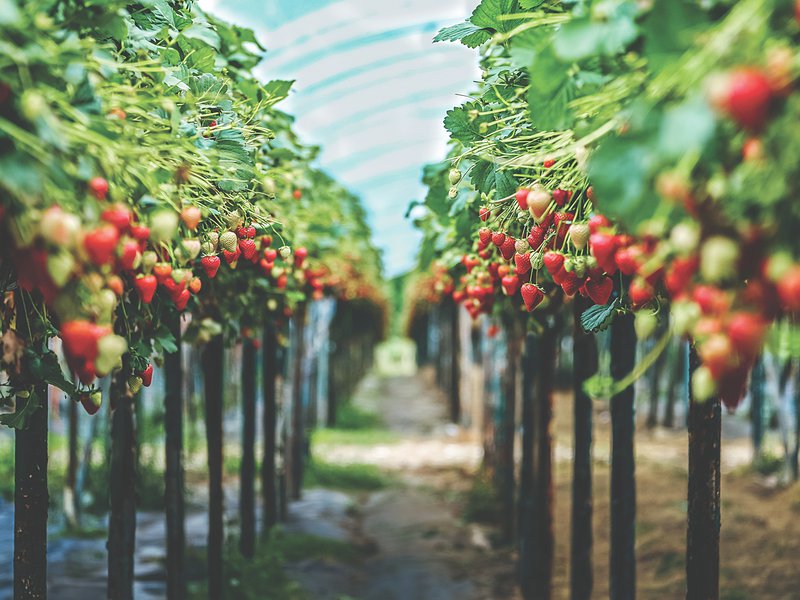At the time of writing it is only mid-April, and the British springtime has barely begun, but yesterday was the first day of the strawberry harvest at Sheeplands, one of three farms in the Berkshire and Surrey countryside owned and run by the Hall Hunter Partnership.
Asked to describe what is now happening there, the company’s head of commercial Stuart Say tells us what we would see if we were looking down onto that farm from a hillside above the River Loddon: “You’d see lots of long cubes, which are the polytunnels where we have our strawberry runs, heated with water from the river to assist with the growing.”
He adds: “Inside, you’d see of rows of plants on high tables, with thousands and thousands of individual strawberries on them. Our picking teams are walking up and down those rows, assessing each fruit, deciding which looks ripe enough. It’s a continual process of hand-selection that will now go on until October or November.”
Two other Hall Hunter properties will begin harvesting a little later in the spring. First, there’s the original homestead of Heathlands, where founders Mark and Mary Hall began their business in 1966, growing produce to sell at London fruit and vegetable markets. Then Tuesley Farm, which was acquired in 2002 and has since become family home to their son Harry Hall, who now runs most of the day-to-day operations.
With all this land dedicated to strawberries (as well as blueberries, raspberries and blackberries), their output makes up about five percent of the UK’s market for that particular crop.
“But we like to think that we’re the best five percent,” says Say. “It’s not about producing in volume, it’s about the appearance of the fruit, that bright, vibrant colour. And the taste, of course, the sweet and juicy eating quality.”

SpinneysFOOD British strawberries from Hall Hunter

Hall Hunter uses sustainable farming practices such as wild bee pollination
Almost every British fruit farmer grows the same varieties of strawberries in much the same way these days, he admits, on tabletops under climate-controlled conditions, using coir structures derived from coconuts. So, how does one get the edge over another?
Say explains: “In our case, we do it by working directly with breeders, to get the absolute best of the varieties that are out there.”
Hall Hunter also invests heavily in technology that prolongs the growing season, improves the quality of the berries and adds appeal to the business in terms of sustainability. Projects in the works include a new environmental system for heating the tunnels and a machine to reprocess coir material as a form of biofuel.
“It’s not about producing in volume, it’s about the appearance of the fruit, that bright, vibrant colour.” ~Stuart Say
“Consumers want to feel they’re doing more to help the environment and they’re much more aware of the supply chain now. We want to deliver the best strawberries while also giving shoppers confidence in what they’re eating,” Say adds. And while they’re eating of course, they may well be thinking of the English fields these strawberries came from, where Hall Hunter balances out innovation with traditional modes of land management, cultivating hedgerows, beetle banks and bird habitats around its main production areas.
“We love the thought that people can enjoy our fruit wherever it ends up, and it might also trigger a pleasant image or memory for them, of eating berries as a child or picking them from their grandmother’s garden… that’s a wonderful thing,” he says.


